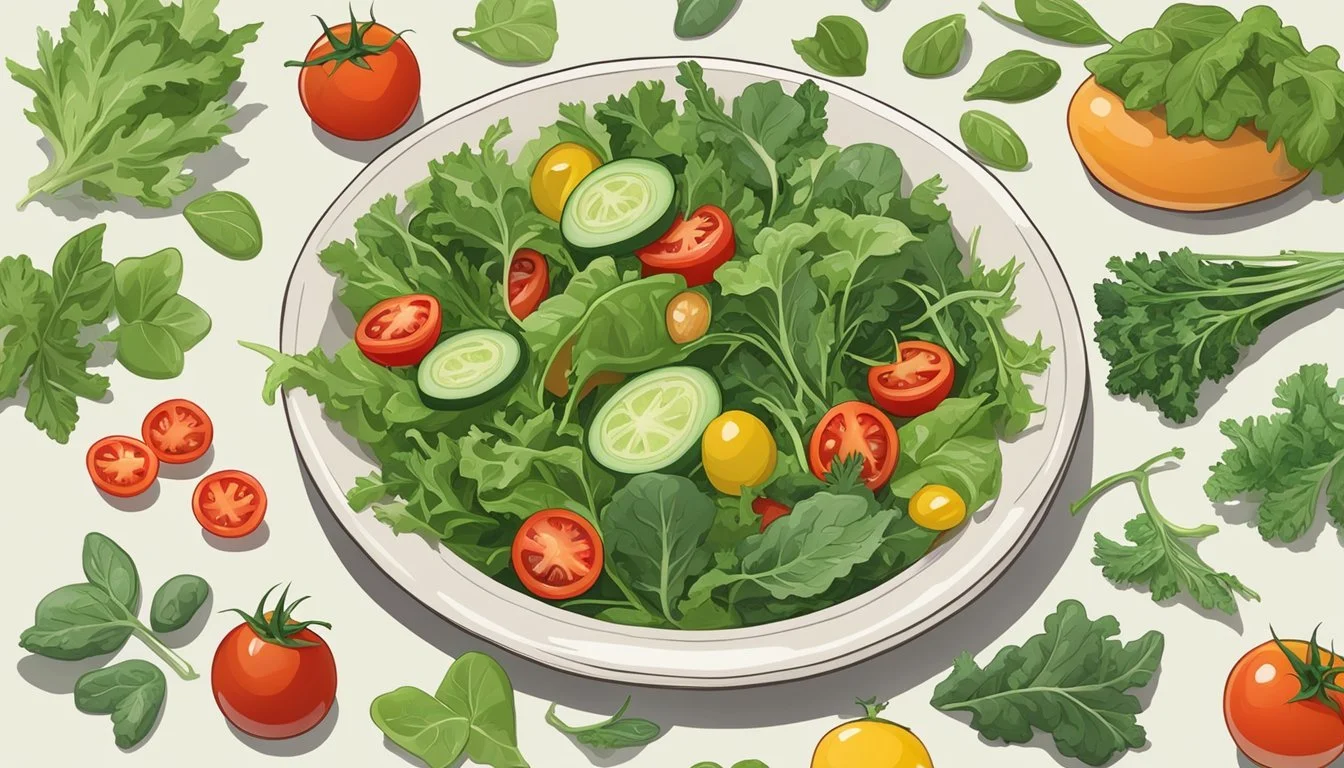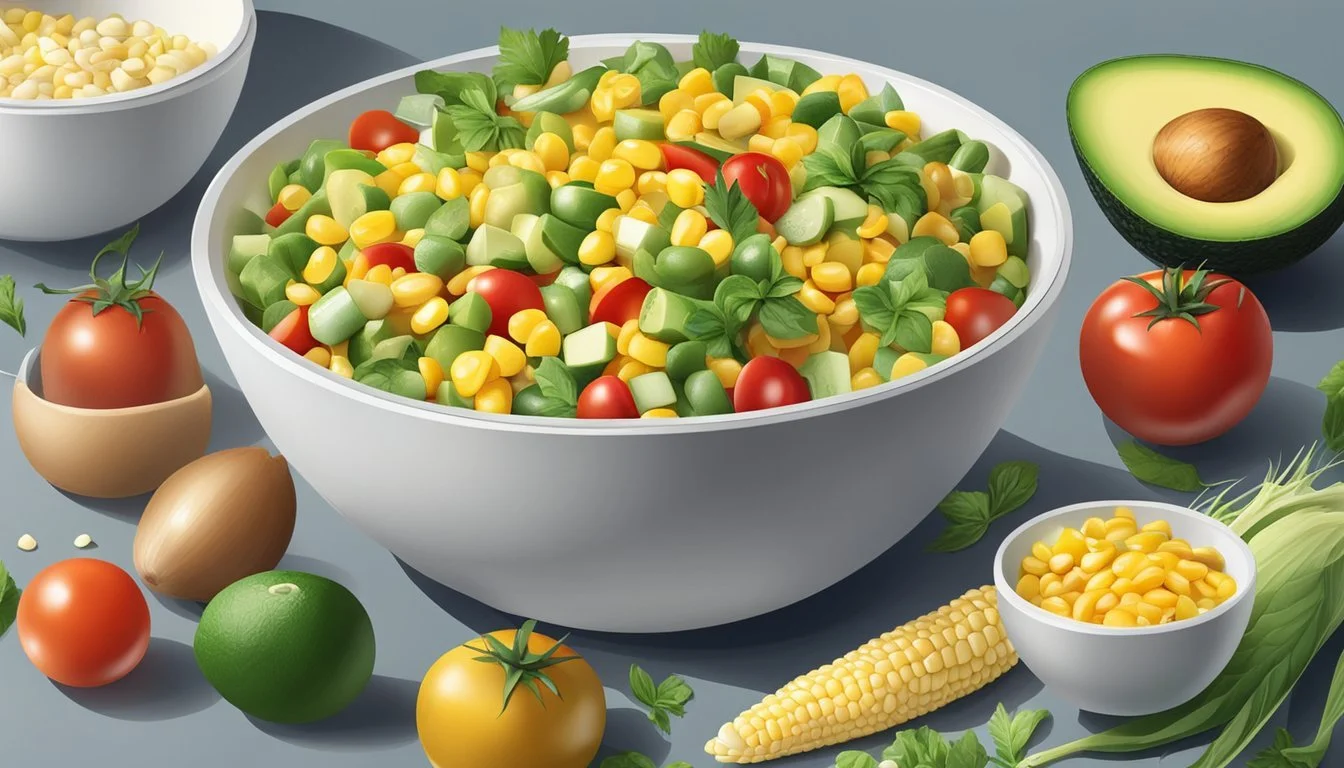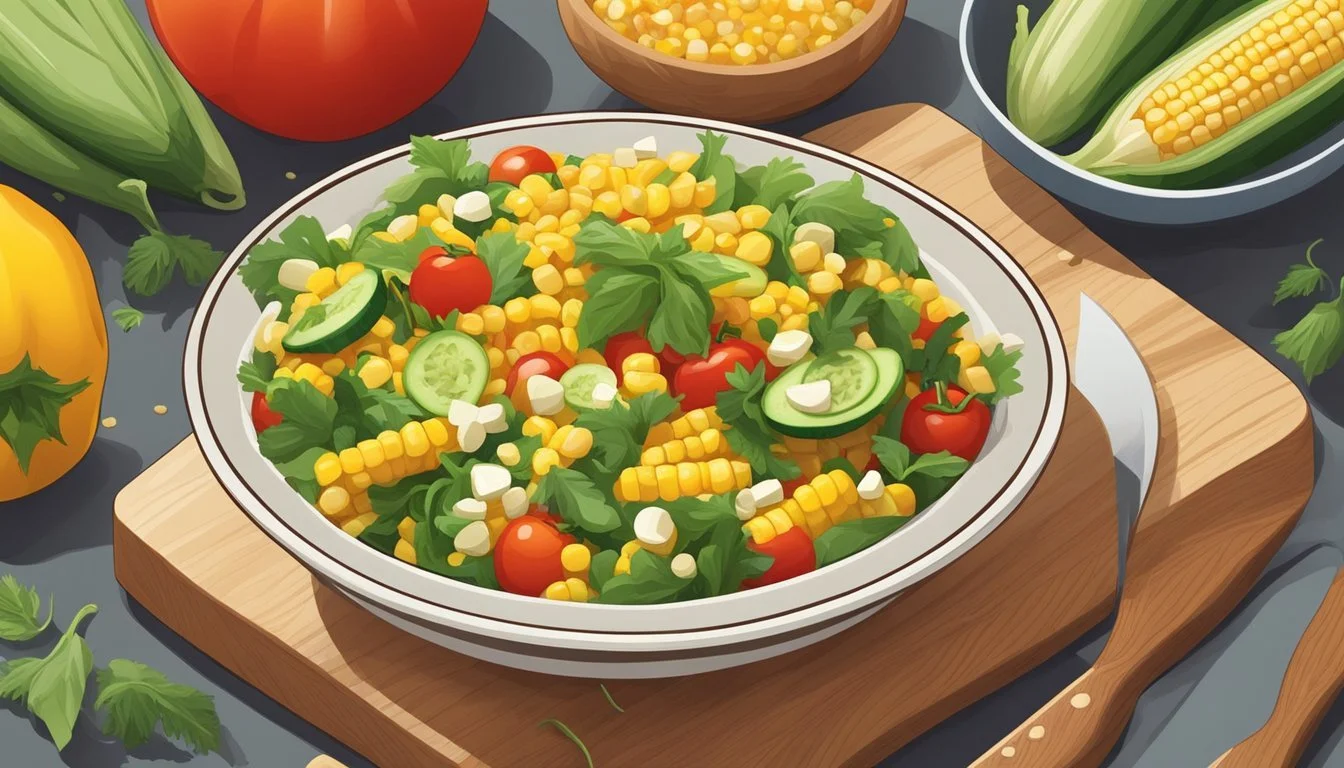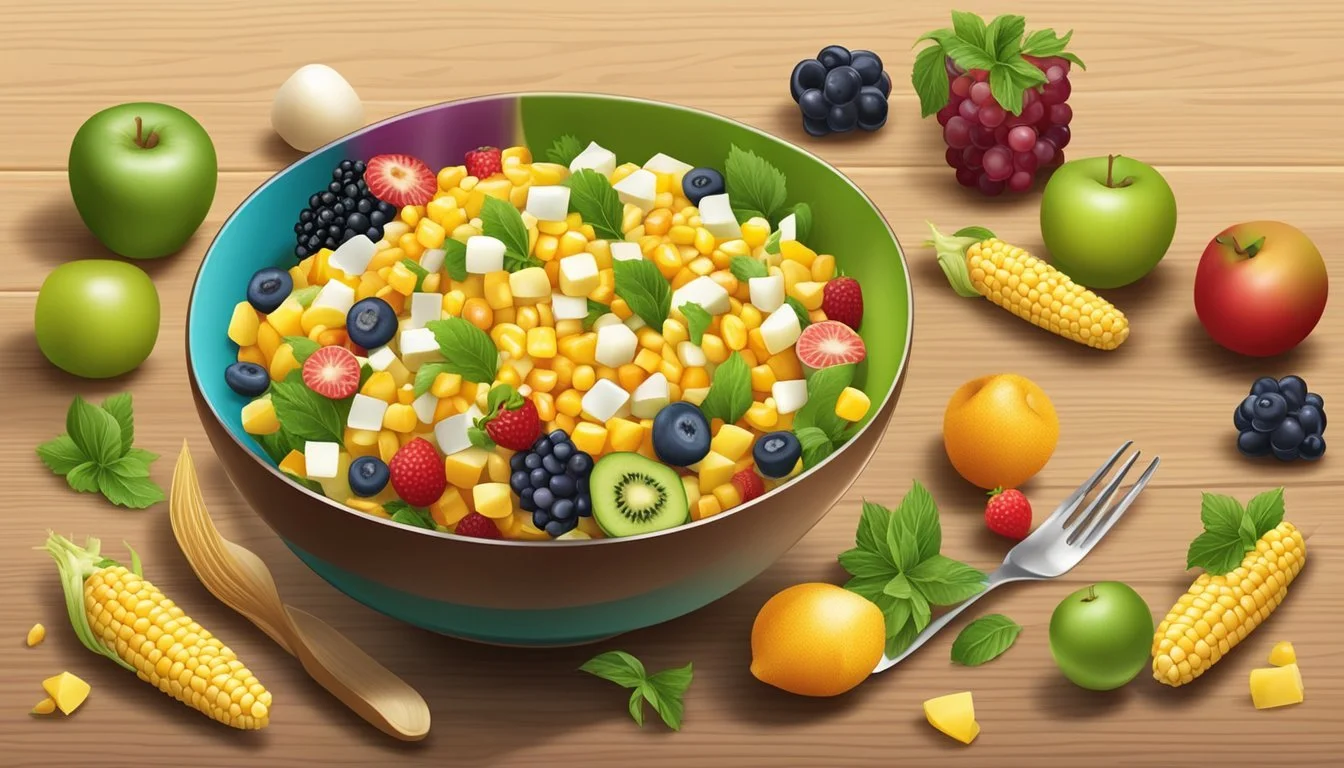Corn Salad Substitutes
Top Alternatives for Fresh Salads
Looking for a delicious twist on your favorite corn salad? Life happens, and sometimes you run out of ingredients, but that doesn't mean you can't enjoy a tasty and nutritious alternative. The best corn substitutes include sweet potatoes, black beans, avocado, chickpeas, and lentils, all of which bring unique flavors and health benefits to the table.
Salads come alive with the vibrant addition of red bell peppers, chickpeas, green lentils, and quinoa. These ingredients not only complement each other well but also provide a rich array of nutrients. In soups, options like potatoes, carrots, and celery step up to the plate, ensuring that your meal remains hearty and satisfying.
Craving chili but missing corn? Split peas, lentils, and chickpeas are excellent alternatives to maintain that perfect texture and taste. Your dishes will not only taste incredible but also gain added nutrition from these healthy swaps.
Understanding Corn Salad
Corn salad is a vibrant and nutritious dish that combines various fresh ingredients to create a symphony of textures and flavors. This section delves into the essential components of a typical corn salad and its numerous health benefits.
Components of Corn Salad
A classic corn salad typically includes sweet corn, which is the star ingredient. Fresh or grilled corn kernels add a sweet and slightly smoky flavor. Cherry tomatoes bring a burst of juiciness and acidity.
Green onions or scallions contribute a mild, oniony bite that enhances the taste. Crumbled feta cheese is often added for its creamy texture and salty flavor, balancing the sweetness of the corn.
Olive oil and lime juice serve as the dressing, providing a light yet tangy coat that melds all the ingredients together. These components together create a salad that is both refreshing and satisfying.
Health Benefits
Corn salad is not only delicious but also packed with nutrients. Sweet corn supplies dietary fiber, which aids in digestion and helps maintain stable blood sugar levels. It also contains vitamin C, which supports the immune system, and potassium, vital for heart health.
Cherry tomatoes are rich in antioxidants like lycopene. Crumbled feta contributes a modest amount of protein and calcium, necessary for bone health. The dressing, made from olive oil and lime juice, adds healthy fats and additional vitamin C.
Eating corn salad provides a balance of nutrients that support overall well-being.
Necessity of Substitutes
The need for substitutes in corn salad recipes often arises due to dietary restrictions, preferences, and the availability of corn. These factors necessitate finding alternative ingredients to ensure everyone can enjoy this dish.
Dietary Restrictions and Preferences
Many people have specific dietary needs that make substituting corn essential. Allergies to corn can cause reactions, making alternatives vital for safe meal preparation. Gluten-free diets also benefit from various corn substitutes like quinoa and rice, which fit seamlessly into gluten-free meal plans.
In addition to allergies, some diets like keto restrict high-carb foods such as corn. Options like cauliflower and zucchini can mimic the texture and low-carb content required for ketogenic eating. This adaptation ensures that individuals can still enjoy a flavorful and satisfying salad without compromising their dietary goals.
Availability Issues
Fresh and frozen corn might not always be accessible due to seasonal availability or supply chain disruptions. During off-season months, or in places where fresh corn is not locally grown, substitutes become indispensable.
Potatoes and sweet potatoes are often used since they are widely available year-round. Additionally, red bell peppers and chickpeas provide a similar sweet crunch to fresh corn, making them effective replacements. This flexibility in ingredients allows for continued enjoyment of corn salads regardless of regional or seasonal corn availability.
Corn Salad Substitutes
When looking to replace corn in salads, certain grains, cereals, and legumes can provide similar textures and flavors while adding nutritional benefits. Here are some great options for grains, cereals, beans, and legumes that can effectively substitute corn in your salad recipes.
Grains and Cereals
Quinoa: Quinoa is a versatile grain that can absorb flavors well, making it a suitable replacement for corn. It's rich in protein and fiber, adding nutritional value to salads.
Rice: Both white and brown rice can be used as substitutes for corn, providing a starchy texture. They work well in various salad recipes, especially those that include dressings.
Barley: Known for its chewy texture, barley is a good option for corn substitutes. It has a nutty flavor that pairs well with other salad ingredients, and it is a good source of fiber.
Buckwheat: Despite its name, buckwheat is not a type of wheat and is gluten-free. It adds a slightly earthy flavor and chewy texture to salads, giving an interesting twist to the dish.
Beans and Legumes
Black Beans: These beans are rich in protein and fiber, making them an excellent replacement for corn in salads. They add a robust texture and slightly sweet flavor.
Chickpeas: Chickpeas are another great substitute, known for their nutty taste and firm texture. They blend well with other vegetables and dressings, enhancing the overall taste of the salad.
Lentils: Whether green, brown, or red, lentils provide plenty of protein and fiber. Their mildly earthy flavor makes them a versatile ingredient and a good corn alternative in salads.
Incorporating these substitutes not only replaces corn but also enhances the nutritional profile of your salads with additional protein and fiber.
Vegetable Alternatives
When substituting for corn salad, choosing the right vegetables can significantly impact the flavor and texture of your dish. Here are some common and starchy vegetable alternatives that can serve as excellent substitutes.
Common Veggie Substitutes
For a crunchy and fresh element, red bell peppers are a standout choice. They add a sweet flavor and vibrant color to any salad. Broccoli and cauliflower offer a unique texture that maintains some firmness even after cooking, making them ideal substitutes. Zucchini is another versatile option, providing a mild flavor and slight crunch.
Celery can be used for its crisp texture and subtle flavor, which pairs well with other vegetables. Chickpeas and green lentils add protein and a hearty texture, perfect for those looking to enhance the nutritional profile of their salad. These vegetables not only replicate the crunchiness of corn but also bring a variety of nutrients to the table. Use them raw or lightly steamed for the best results.
Starchy Alternatives
When a heartier option is needed, consider starchy alternatives. Potatoes, particularly new potatoes, can serve as a filling and satisfying substitute. They absorb flavors well while maintaining a firm texture. Sweet potatoes provide a sweeter profile and a soft texture, which contrasts nicely with crunchier ingredients.
Polenta, made from ground corn, can be used as an unexpected substitute. Dice it into small cubes and pan-fry or bake to add a unique texture and corn-like flavor. Lentils and chickpeas also fall into this category. Although they are legumes, their starchy quality makes them suitable for adding substance and heft to your salad.
Combining these starchy options with the common veggie substitutes ensures that your salad remains balanced, flavorful, and satisfying.
Fruit Substitutes
For those seeking alternatives to corn in a salad, a variety of fruits can offer a sweet, crisp, and refreshing element.
Sweet Fruit Options
Apples
Crisp and sweet, apples can provide a satisfying crunch similar to corn. Choose varieties like Granny Smith for a tart flavor or Fuji for a sweeter taste. Apples can be diced and added raw to salads, enhancing both texture and flavor.
Pears
Pears bring a juicy and sweet component to salads. Asian pears, in particular, have a firm texture that holds up well when mixed with other salad ingredients. They can be sliced thinly or diced, making them a versatile replacement.
Peaches and Apricots
Peaches and apricots introduce a soft sweetness. Canned, fresh, or dried options work well, depending on the salad's needs. Diced peaches or apricots add vibrant orange hues and sweet flavors that complement various greens and other vegetables.
Including these fruits in a salad can not only replace the corn but also add a delightful variety in texture and flavor.
Additional Substitutes
Adding different ingredients to corn salads can enhance flavor, texture, and nutritional value. Consider herbs and spices for zest, protein-rich alternatives for sustenance, and a variety of dairy and dressings to elevate the taste.
Herbs and Spices
Incorporate cilantro for its bright and citrus-like flavor, which can bring a refreshing touch to the salad.
Basil adds a sweet, slightly peppery taste, perfect for summer dishes.
For a versatile herb, parsley is ideal with its mild, fresh profile.
Add some heat with chili or pepper to create a balanced spice level.
These herbs and spices can transform a simple salad into an aromatic and flavorful dish, appealing to various palates.
Protein-Rich Substitutes
Boost the salad's nutritional profile by adding various proteins:
Chicken - Its mild flavor pairs well with many other ingredients.
Steak - Adds a hearty and rich taste.
Salmon - Offers healthy omega-3 fats along with a unique flavor.
Shrimp - Adds a touch of sweetness and a soft texture to the dish.
These proteins ensure the salad is not only flavorful but also satisfying and nutritious.
Dairy and Dressings
Feta cheese is a standout with its tangy and crumbly texture.
Parmesan and mozzarella provide varied textures and flavors, from sharp to mild and creamy.
Sour cream can be used to add a tart, creamy element. Mix with mayonnaise for added richness and body.
These dairy options can elevate the overall experience of the salad, turning a simple dish into an indulgent treat.
Innovative Corn Substitutes in Dishes
Discovering substitutes for corn in various dishes can enhance flavors while accommodating dietary needs. This section explores effective alternatives in both salads and cooked dishes.
Replacing Corn in Salads
When substituting corn in salads, finding ingredients that mimic its sweetness and crunch is key. Quinoa is an excellent option, providing a similar texture and the ability to absorb dressings effectively. It complements fresh vegetables in summer salads.
Bell peppers offer a vibrant crunch and a touch of sweetness. They pair well with greens and can be used in corn salad recipes to add a pop of color.
Chickpeas bring a nutty flavor and firm texture, making them ideal for adding protein to corn salad substitutes. They are versatile in side dishes and work well in a variety of dressings.
A table of substitutes for clarity:
Ingredient Benefits Quinoa Absorbs flavors, crunchy texture Bell Peppers Sweet, colorful Chickpeas Nutty, protein-rich
Alternatives in Cooked Dishes
For cooked dishes, ingredients that mirror corn's texture and flavor are essential. Zucchini is a great choice; when boiled or grilled, it can substitute corn in soups and chowders. Its mild taste works well with other ingredients in tacos and side dishes.
Sweet potatoes add a rich sweetness and creamy texture. They are suitable for dishes like chili, where their flavor enhances the overall taste.
Use Cauliflower in place of corn for a low-calorie alternative in casseroles and stir-fries. Its ability to absorb flavors makes it versatile across different cuisines.
Key substitutes summarized:
Ingredient Best Uses Zucchini Soups, chowders, tacos Sweet Potatoes Chili, cooked dishes Cauliflower Casseroles, stir-fries
Adjusting Flavor and Texture
When substituting ingredients in corn salad, it's essential to match the sweetness and texture of the original dish. The following tips will help you achieve an optimal balance.
Sweetness Adjustments
To mimic the natural sweetness of corn, several alternatives can be used. Honey, maple syrup, and agave nectar are excellent liquid sweeteners that blend well with salad dressings. Honey adds a robust flavor, while maple syrup offers a subtle, earthy taste.
Sugar can also be used, but it's less integrated than liquid sweeteners. Additionally, diced sweet bell peppers or thinly sliced carrots provide a natural sweetness that complements other salad ingredients. Choose the sweetener based on your desired flavor profile and salad ingredients.
Textural Considerations
Achieving the right texture is crucial for a satisfying salad. Bell peppers, chickpeas, and quinoa offer a crunchy contrast similar to that of corn. For a creamy element, consider adding avocado or a yogurt-based dressing.
Potato starch and tapioca starch serve as good thickening agents that can be added to sauces or dressings without altering the flavor. Arrowroot powder is another viable option but tends to leave a slightly glossy finish. Balancing creamy and crunchy elements ensures a harmonious texture.
Recipe Adaptation Techniques
When substituting ingredients in recipes, it’s essential for cooks to consider texture, flavor, and cooking time. For corn salad substitutes, various vegetables and legumes can be used, each bringing its unique properties to the dish.
Vegetables like zucchini, broccoli, and cauliflower can replace corn for a fresh crunch. They blend well in salads while maintaining a similar texture.
Legumes such as chickpeas and black beans offer protein and a slightly different mouthfeel but are equally satisfying. They absorb flavors beautifully and complement various dressings.
Sweet potatoes, red bell peppers, and avocados are other excellent substitutes that add color and richness.
Adjusting cooking times is crucial. Broccoli and cauliflower might need blanching, while beans require proper rinsing and draining.
A table for common corn salad substitutes:
Substitute Texture Best Use Zucchini Crisp Raw in salads Broccoli Crunchy Blanched or raw in salads Cauliflower Firm Raw or lightly cooked Chickpeas Creamy Mixed in for bulk Black Beans Soft For added protein Red Bell Peppers Crisp For color and sweetness Avocados Creamy Added richness
When adapting recipes, experiment with combinations to find what fits best. Adjust seasoning levels to balance flavors, and ensure proper preparation methods to maintain the integrity of the salad.
Cooking techniques like roasting or blanching can enhance the texture and flavor profile of substitutes, making the adapted recipe as delightful as the original.






